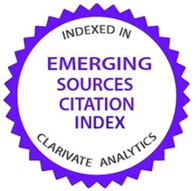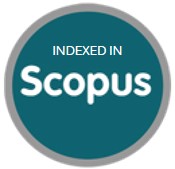Perspectivas de la paz en el mundo
Análisis multivariante desde los Objetivos de Desarrollo Sostenible
DOI:
https://doi.org/10.21830/19006586.1038Palabras clave:
análisis multivariante, desarrollo sostenible, indicadores, justicia, ODS 16, pazResumen
Este artículo analiza la paz como dimensión del desarrollo sostenible, para lo cual estudia mediante técnicas multivariantes las relaciones entre ocho indicadores de los Objetivos de Desarrollo Sostenible, según datos reportados por 145 países con corte al año 2021. Se describen las diferencias y similitudes entre países, según su pertenencia al norte o al sur global, así como por continentes, para observar la pertinencia de conformar un clúster de naciones. Se concluye que hay una gran heterogeneidad entre países y regiones, y el índice de percepción de la corrupción es uno de los indicadores que genera mayor diferenciación. También se delimitan seis clústeres de países por situaciones similares, que permiten resumir los retos que enfrentan los países para fomentar la paz, la justicia y la constitución de instituciones gubernamentales sólidas.
Descargas
Referencias bibliográficas
Alemany, J. (2000). Mecanismos de justificación de la violencia y cultura de paz. Fomento Social, 219, 419-433. https://doi.org/10.32418/rfs.2000.219.2488
Aly, E. Elsawah, S., & Ryan, M. J. (2022). A review and catalogue to the use of models in enabling the achievement of sustainable development goals (SDG). Journal of Cleaner Production, 340, 130803. https://doi.org/10.1016/j.jclepro.2022.130803
Amadei, B. (2021). Systems approach to the sustainability-peace nexus. Sustainability Science, 16, 1111-1124. https://doi.org/10.1007/s11625-020-00902-x
Amaruzaman, S., Trong Hoan, D., Catacutan, D., Leimona, B., & Malesu, M. (2022). Polycentric environmental governance to achieving SDG 16: Evidence from Southeast Asia and Eastern Africa. Forests, 13, 68. https://doi.org/10.3390/f13010068
Barragán-Fonseca, K. Y., Barragán-Fonseca, K. B., Verschoor, G., Van Loon, J. A., & Dicke, M. (2020). Insects for peace. Current Opinion in Insect Science, 40, 85-93. https://doi.org/10.1016/j.cois.2020.05.011
Cairo, H., & Ríos, J. (2019). Las élites políticas y la paz territorial en Colombia: Un análisis de discurso en torno al Acuerdo de Paz. Revista Española de Ciencia Política, 50, 91-113. https://doi.org/10.21308/recp.50.04
Calvillo, J. (2017). La relevancia de la agenda de desarrollo en la negociación del tratado de libre comercio entre Estados Unidos y la Unión Europea. Política y Sociedad, 54(3), 825-845. https://doi.org/10.5209/POSO.52853
Cling, J., & Delecourt, C. (2022). Interlinkages between the Sustainable Development Goals. World Development Perspectives, 25(3), 100398. https://doi.org/10.1016/j.wdp.2022.100398
Cotte Poveda, A. (2018). Desarrollo económico, violencia y corrupción. Lecturas de Economía Social, 19(31), 11-15. https://doi.org/10.15332/22484914
Davenport, C., Melander, E., & Regan, P. M. (2018). The peace continuum: What it is and how to study it. Oxford University Press.
De Groot, O., Bozzoli, C., Alamir, A., & Brück, T. (2022). The global economic burden of violent conflict. Journal of Peace Research, 59(2), 259-276. https://doi.org/10.1177%2F00223433211046823
Doğruel Anuşlu, M., & Ümit Fırat, S. (2019). Clustering analysis application on Industry 4.0-driven global indexes. Procedia Computer Science, 158, 145-152. https://doi.org/10.1016/j.procs.2019.09.037
Drastichová, M., & Filzmoser, P. (2019). Assessment of sustainable development using cluster analysis and principal component analysis. Problemy Ekorozwoju, 14(2), 7-24. https://bibliotekanauki.pl/articles/371108
Gallo, P. J., Sosa, S., & Velez-Calle, A. (2023). Business for peace: How entrepreneuring contributes to Sustainable Development Goal 16. BRQ Business Research Quarterly, 26(1), 62-78. https://doi.org/10.1177/23409444221118097
Galtung, J. (1996). Peace and conflict research in the age of the cholera: Ten pointers to the future of peace studies. International Journal of Peace Studies, 1(1), 25-36. http://www.jstor.org/stable/45038019
Ginty, M. (2010). Hybrid peace: The interaction between top-down and bottom-up peace. Security Dialogue, 41(4), 391-412. https://doi.org/10.1177/0967010610374312
Govender, P., & Sivakumar, V. (2020). Application of k-means and hierarchical clustering techniques for analysis of air pollution: A review (1980-2019). Atmospheric Pollution Research, 11(1), 40-56. https://doi.org/10.1016/j.apr.2019.09.009
Hope, K. R. (2020). Peace, justice and inclusive institutions: overcoming challenges to the implementation of Sustainable Development Goal 16. Global Change, Peace & Security, 32(1), 57-77. https://doi.org/10.1080/14781158.2019.1667320
Horvath, S. M., Muhr, M. M., Kirchner, M., Toth, W., Germann, V., Hundscheid, L., Vacik, H., Scherz, M., Kreiner, H., Fehr, F., Borgwardt, F., Gühnemann, A., Becsi, B., Schneeberger, A., & Gratzer, G. (2022). Handling a complex agenda: A review and assessment of methods to analyse SDG entity interactions. Environmental Science & Policy, 131, 160-176. https://doi.org/10.1016/j.envsci.2022.01.021
Hotelling, H. (1933). Analysis of a complex of statistical variables into principal components. Journal of Educational Psychology, 24(6), 417-441. https://doi.org/10.1037/h0071325
Hotelling, H. (1936). Simplified calculation of principal components. Psychometrika, 1(1), 27-35. https://doi.org/10.1007/BF02287921
Huseynov, R., Aliyeva, N., Bezpalov, V., & Syromyatnikov, D. (2023). Cluster analysis as a tool for improving the performance of agricultural enterprises in the agro-industrial sector. Environment, Development and Sustainability. https://doi.org/10.1007/s10668-022-02873-8
Institute for Economics and Peace. (2022). Global Peace Index. https://www.visionofhumanity.org/maps/#/
Jakob, M., & Steckel, J. C. (2016). Implications of climate change mitigation for sustainable development. Environmental Research Letters, 11(10), 104010. https://doi.org/10.1088/1748-9326/11/10/104010
Jarstad, A., Eklund, N., Johansson, P., Olivius, E., Saati, A., Sahovic, D., Strandh, V., Söderström, J., Eklund, M., & Åkebo, M. (2019). Three approaches to peace: A framework for describing and exploring varieties of peace (Umeå Working Papers in Peace and Conflict Studies 12). Faculty of Social Sciences, Umeå University. http://urn.kb.se/resolve?urn=urn:nbn:se:umu:diva-165979
Küfeoğlu, S. (2022). SDG-16: Peace, justice and strong institutions. En Emerging technologies. (Sustainable Development Goals Series). Springer. https://doi.org/10.1007/978-3-031-07127-0_18
Laberge, M., & Touihri, N. (2019), Can SDG 16 data drive national accountability? A cautiously optimistic view. Global Policy, 10, 153-156. https://doi.org/10.1111/1758-5899.12607
Lalama Franco, R., & Bravo Lalama, A. (2019). América Latina y los objetivos de desarrollo sostenible: Análisis de su viabilidad. Revista de Ciencias Sociales, 25, 12-24. https://doi.org/10.31876/rcs.v25i1.29591
Lopera Chaves, M., & García Vega, L. M. (2015). Factores sociales asociados a la cultura de paz en Colombia. ¿Estamos preparados para el reto? Desbordes, 6, 133-150. https://doi.org/10.22490/25394150.1875
Lozares, C., & López, P. (1991). Combinación de métodos factoriales y análisis de conglomerados en R: el paquete FactoClass. Revista Colombiana de Estadística, 30(2), 231-245. https://doi.org/10.5565/rev/papers/v37n0.1595
Mac-Ginty, R., Joshi, M., & Lee, S. Y. (2019). Liberal peace implementation and the durability of post-war peace. International Peacekeeping, 26(4), 457-486. https://doi.org/10.1080/13533312.2019.1618189
Majerova, I., & Nevima, J. (2017). The measurement of human development using the Ward method of cluster analysis. Journal of International Studies, 10(2), 239-257. https://doi.org/10.14254/2071-8330.2017/10-2/17
Marej, K. (2021). Paz positiva: propuestas para un paradigma integrador. Revista Latinoamericana Estudios de la Paz y el Conflicto, 3(5), 53-74. https://doi.org/10.5377/rlpc.v3i5.12456
Marujo, H. Á., & Casais, M. (2021). Educating for public happiness and global peace: Contributions from a Portuguese Unesco chair towards the Sustainable Development Goals. Sustainability, 13(16), 9418. https://doi.org/10.3390/su13169418
McDermott, C. L., Acheampong, E., Arora-Jonsson, S., Asare, R., De Jong, W., Hirons, M., Khatun, K., Menton, M., Nunan, F., Poudyal, M., & Setyowati, A. (2019). SDG 16: Peace, justice and strong institutions - A political ecology perspective. En P. Katila, C. Pierce Colfer, W. de Jong, G. Galloway, P. Pacheco & G. Winkel (Eds), Sustainable Development Goals: Their impacts on forests and people (1st ed., pp. 510-540). Cambridge University Press. https://doi.org/10.1017/9781108765015.018
Medina-Hernández, E. J., Guzmán-Aguilar, D. S., Muñiz-Olite, J. L., & Siado-Castañeda, L. R. (2023). The current status of the sustainable development goals in the world. Development Studies Research, 10(1). https://doi.org/10.1080/21665095.2022.2163677
Pearson, K. (1901). On lines and planes of closest fit to systems of points in space. Philosophical Magazine, 2(11), 559-572. https://doi.org/10.1080/14786440109462720
Peña, D. (2002). Análisis de datos multivariantes. https://bit.ly/3MaFH03
Peters, L.E.R., Kelman, I., & Shannon, G. (2022). Connecting positive peace and positive health in a systems approach to sustainable development at the community level. Environmental Sciences Proceedings, 15(1), 46. https://doi.org/10.3390/environsciproc2022015046
Pradhan, P., Costa, L., Rybski, D., Lucht, W., & Kropp, J. P. (2017). A systematic study of Sustainable Development Goal (SDG) interactions. Earth’s Future, 5, 1169-1179. https://doi.org/10.1002/2017EF000632
Qazi, A., Angell, L. C., Daghfous, A., & Al-Mhdawi, M. K. (2023). Network-based risk assessment of country-level sustainable development goals. Environmental Impact Assessment Review, 99, 107014. https://doi.org/10.1016/j.eiar.2022.107014
Richmond, O. P., & Mitchell, A. (2011). Peacebuilding and critical forms of agency: From resistance to subsistence. Alternatives, 36(4), 326-344. https://doi.org/10.1177/0304375411432099
Ríos Sierra, J., & Gago Antón, E. (2018). Realidades y desafíos de la paz territorial en Colombia. Revista de Sociología, 103(2), 281-302. https://doi.org/10.5565/rev/papers.2361
Rojas-Robles, R. (2018). Ambiente y post-acuerdo en Colombia: la construcción de una paz integral y con la naturaleza no-humana. Gestión y Ambiente, 21(2), 183-192. https://doi.org/10.15446/ga.v21n2supl.77961
Sachs, J., Kroll, C., Lafortune, G., Fuller, G., & Woelm, F. (2021). The decade of action for the Sustainable Development Goals. Sustainable Development Report 2021. Cambridge University Press. https://doi.org/10.1017/9781009106559
Sánchez Gómez, J. (2020). Resultados de Colombia en el índice ODS 2019: más rezagos que objetivos cumplidos. Observatorio Regional de ODS, Universidad de los Andes. http://hdl.handle.net/1992/47761
Shinko, R. E. (2008). Agonistic peace: A postmodern reading. Millennium, 36(3), 473-491. https://doi.org/10.1177/03058298080360030501
Steinert, C. V., Steinert, J. I., & Carey, S. C. (2019). Spoilers of peace: Pro-government militias as risk factors for conflict recurrence. Journal of Peace Research, 56(2), 249-263. https://doi.org/10.1177/0022343318800524
Taylor, L.K., & Bähr, C. (2022), A multi-level, time-series network analysis of the impact of youth peacebuilding on quality peace. Journal of Aggression, Conflict and Peace Research, 15(2), 109-123. https://doi.org/10.1108/JACPR-02-2022-0685
Uribe López, M. (2018). Infraestructuras de paz y estatalidad en Colombia. Perfiles Latinoamericanos, 26(51). https://doi.org/10.18504/pl2651-007-2018
Veldhuis, B. (2020). Women waging War and Peace. The relation between female legislators and armed conflict [tesis de Maestría en Gestión y Política Pública Internacional, Erasmus University Rotterdam]. https://thesis.eur.nl/pub/56293
Ward, J. (1963). Hierarchical grouping to optimize an objective function. Journal of the American Statistical Association, 58(301), 236-244. https://doi.org/10.1080/01621459.1963.10500845
Widom, C. S. (2017). Long‐term impact of childhood abuse and neglect on crime and violence. Clinical Psychology: Science and Practice, 24(2), 186-202. https://doi.org/10.1037/h0101743
Yarnall, K., Olson, M., Santiago, I., & Zelizer, C. (2021). Peace engineering as a pathway to the sustainable development goals. Technological Forecasting and Social Change, 168, 120753. https://doi.org/10.1016/j.techfore.2021.120753
Descargas
Publicado
Cómo citar
Número
Sección
Licencia
Derechos de autor 2023 Revista Científica General José María Córdova

Esta obra está bajo una licencia internacional Creative Commons Atribución-NoComercial-SinDerivadas 4.0.

| Estadísticas de artículo | |
|---|---|
| Vistas de resúmenes | |
| Vistas de PDF | |
| Descargas de PDF | |
| Vistas de HTML | |
| Otras vistas | |
























